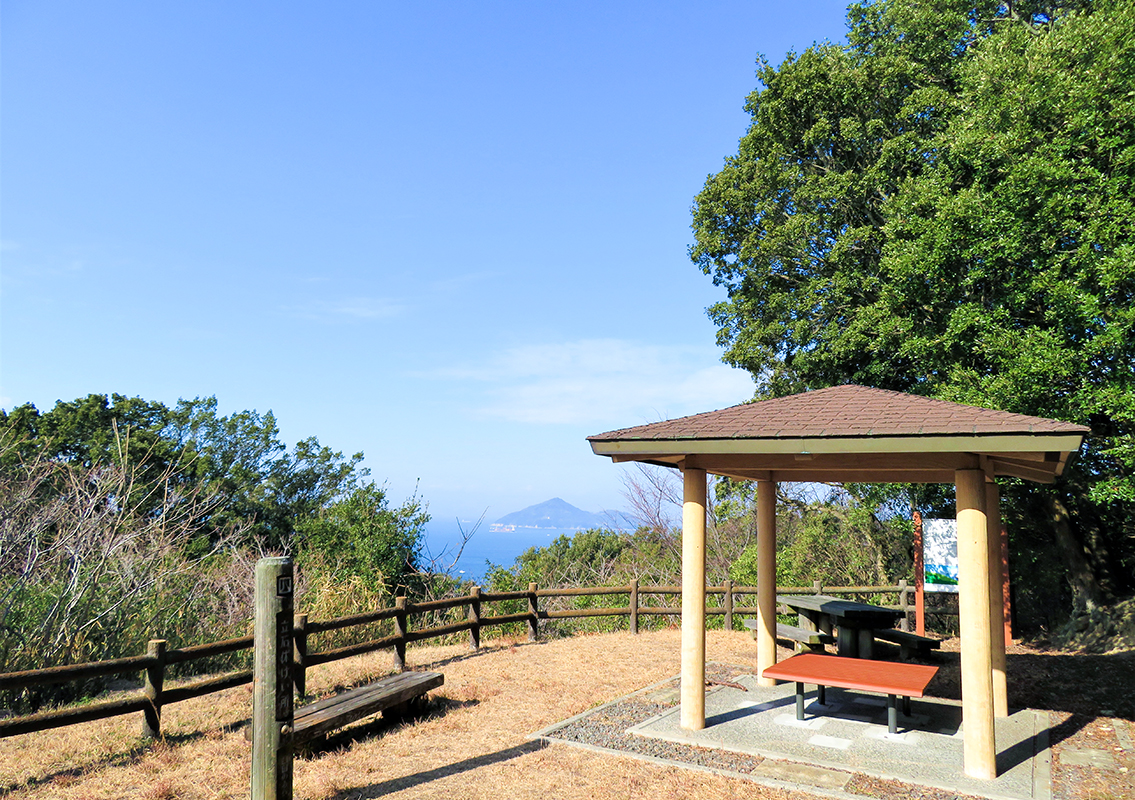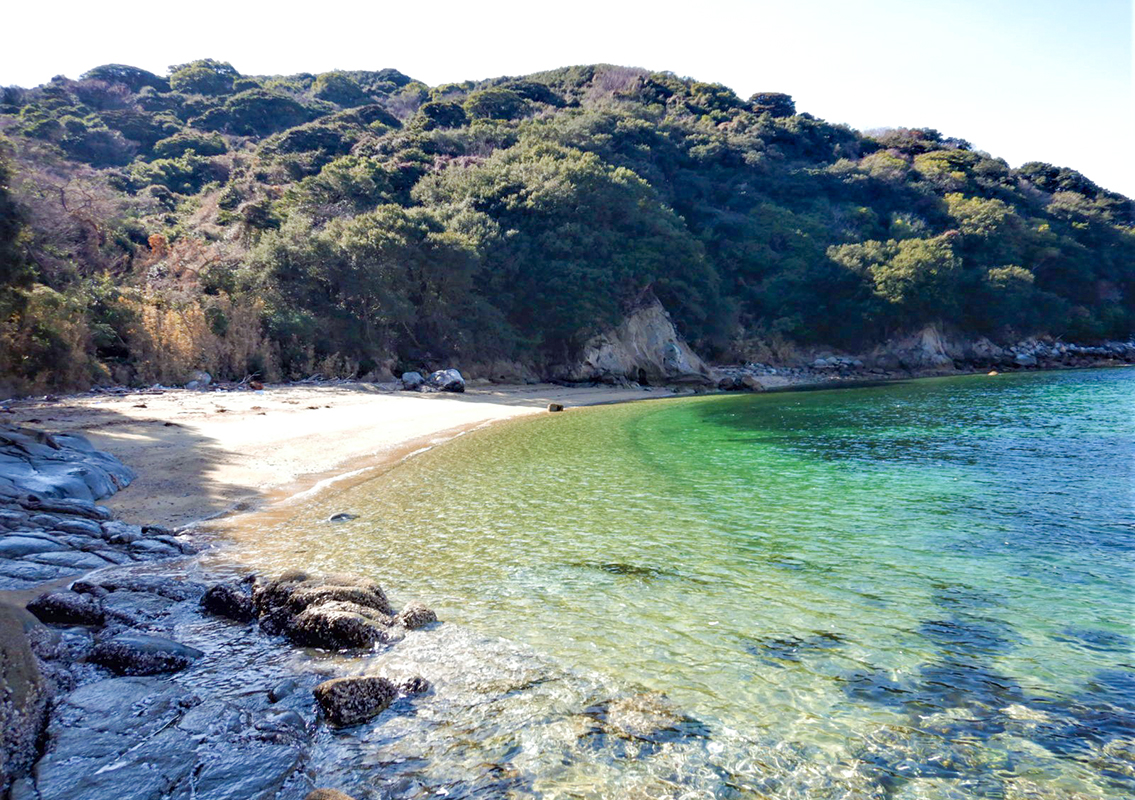Cape Tour Road

Cape Tour Road
Misaki meguri no michi is a course that touches upon the tip of Shonai Peninsula, and it is the closest course to the sea among Shikoku’s michi in Kagawa Prefecture. Along the course, there are many plants unique to the coastal area, such as sea bilberry, ubame oak, myrica rubra, etc which grow thickly. In particular, you can see the pure forests of ubame oak from the cliffs near the coast. It will be a pleasant and relaxing experience to walk through this path, with sunlight filtering through the thick trees. Don’t miss the spectacular Seto Inland Sea that spreads out before your eyes.
Cape Tour Road(7.4km)

 Spots to photograph
Spots to photograph
If you wish to receive a certificate, please take a photo that includes yourself at the designated photo point for each course.
Nearby sightseeing spots

-
1
 Nirohama (Natural Beach Conservation Area, Kagawa Prefecture)
Nirohama (Natural Beach Conservation Area, Kagawa Prefecture)Nirohama is a sandy beach about 15 m wide that stretches for about 250 m like an arc, and you will be refreshed by the beautiful and magnificent scenery of the sky and the sea that spreads all over. Spend a relaxing time surrounded by the pleasant sea breeze and roar of the sea.
-
2
 Dondoro Stone
Dondoro StoneDondoro means thunder, and you can see the one looks like a cat's claw mark on the surface of the dondoro stone. Long ago, people in this region believed that there was a cat-like monster in the thunder, and it is said that after the thunder struck, the monster made a claw mark when it ascended to the heaven again, so it is called Dondoro stone.
-
3
 Tateishi Rest Area
Tateishi Rest AreaThe large rocks behind the rest area are called Tateishi. It is popular among locals, and is a guide for fishing and voyage from the sea. From the rest area, you can see the Seto Inland Sea and the ships coming and going there.
-
4
 Sekinoura
SekinouraIf you go down the mountain road about 200 meters north from the torii gate of Misaki Shrine, you will find silent creek. This place is called Sekinoura, and is said to be the site of a checkpoint that used to collect tolls from ships passing from offshore in the Kamakura and Muromachi periods, and was so important that it was called one of the four major checkpoints along with Kaminoseki, Nakaseki, and Shimonoseki in Yamaguchi Prefecture. From the Meiji to the early Showa period, the fishing boats replenished with water and used it as a place to rest while waiting for the tide. Especially during the peak fishing season, it is said that shops selling sake, sweets, and daily necessities were opened. Near the beautiful sandy beach, there is still a well with fresh water, which reminds us of those days. You should visit it.
-
5
 Misaki Shrine
Misaki ShrineLocated at the top of a small mountain at the tip of the peninsula, it is worshiped as the god of ship safety.
-
6
 Sanuki Misaki Lighthouse
Sanuki Misaki LighthouseSince the lights were first lit on January 29, 1959, it has continued to protect the safety of ships navigating the Seto Inland Sea, which is so busy that it is also known as the "Ginza of the Sea". The lighthouse stands taller than the surrounding trees.
-
7
 Miyuki Stone
Miyuki StoneAbout 200 meters offshore from the Sanuki Misaki Lighthouse, there is a large rock called Miyuki stone sticking out of the sea. The area around this rock is deep even in the Seto Inland Sea, and the undercurrents are fierce to create whirling waves, making it a perfect fishing ground for sea bream and attracting fishing boats all year round. It is also a scenic spot for the sunset.



